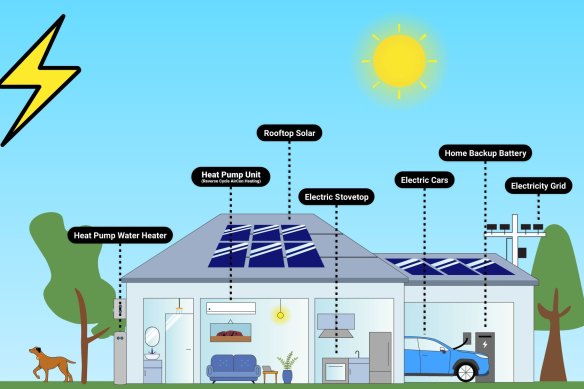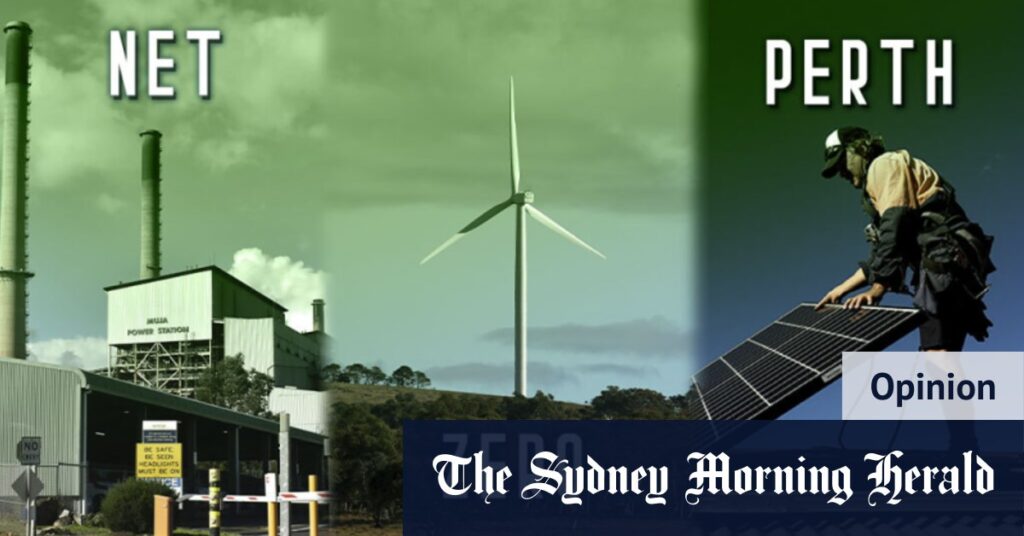Short-term energy storage is typically a series of batteries across Perth that capture energy at a local, community and grid level. WA has a large battery nearing completion in Kwinana (200 megawatt hours) but more is needed – Sustainable Energy Now modeling shows 12 gigawatt hours of storage is needed. So we need the equivalent of 60 more of the Kwinanas
batteries: across electric vehicle batteries, home batteries, community batteries as well as utility-scale large batteries such as the Kwinana example and longer-term energy storage technologies. Other states are investing heavily in storage and WA is lagging behind.
The part that EVs can play? They have the potential to be connected to the grid, which allows you to plug your car into the grid to charge from excess energy during the day, then draw energy from it at night. At night you can run your house from your car, because the car battery is five times bigger than the house battery. The vehicle-to-grid technology for this already exists.

How to run your home in net-zero Perth.Credit:Again in Australia
Long-term energy storage is needed when the sun doesn’t shine, or the wind doesn’t blow for a long time. This turns out not to be the case, when onshore and offshore wind over a wide geographical area is added to the energy mix along with solar and battery storage.
That can be provided by pumped hydro – storing water in reservoirs that are pumped in and out when energy is needed – and one or more promising currently developing technologies such as compressed air energy storage. . There are feasibility studies currently being run to look at pumped hydro for the Collie area in its post-coal era. Traditional gas turbine generation will be held in emergency reserve.
Our modeling at Sustainable Energy Now shows that this vision of a nearly 100 per cent renewable energy-powered Perth can be an affordable reality.
The future of energy is electric – especially in our homes and businesses.
uploader
Home electrification using heat pumps for space heating and solar hot water boosting, induction cooktops and battery electric personal transport is the future of Net Zero Perth. This is achievable and practical today for most households given the right policies, incentives and regulations. Fully electrified homes are not only zero-emission but also save homeowners money – up to $5000 per year by the end of the decade, as Rewiring Australia shows.
However, new business models are needed to make the availability and benefits of solar, electrification and batteries available to everyone, not just well-heeled owners of single residences.
Rental properties or apartments without direct access to rooftop solar use cheap clean energy through “solar gardens” using virtual rooftop solar on other buildings (commercial, public buildings or industrial). New business models will unlock this huge potential energy source that will allow energy users to become “prosumers” who both produce and consume energy while investing in rooftop solar aggregating businesses. and battery storage for shareholders.
uploader
Energy use becomes more visible, democratized and controlled by the end-user.
All energy users can participate in communities that can be physical and virtual. Residents of social and community housing alike will share in the benefits of a clean energy future.
So, the clean energy future doesn’t need a silver bullet. The right policies, regulations and timely government investment to unlock the benefits of renewable energy for all West Australians.
WA’s electricity system was originally designed around central thermal power stations, mostly coal and gas, and now requires a complete overhaul of the generation, storage, transmission and distribution networks. of it to become a smart grid suitable for a clean renewable energy future.
All the modeling and transition analysis in this area shows that this work is important and needs to happen quickly.
Despite their current energy crisis and not because of it, the eastern states are ahead of us and the investment more than $3.8 billion announced to replace Collie coal should be a priority of the current state government , so that WA is not left behind in a net-zero world.
Follow WAtoday at Instagram, LinkedIn, Facebook and Twitter for curated selections of the day’s biggest local, national and international news.
